“Pythagoras, like the Chaldeans under whom he studied, thought that souls ended up in fava beans. My college philosophy textbook contained the fragmentary Pythagorean tenet “abstain from beans,” not explaining that it might have something to do with eating your forebears. (Heraclitus referenced this in his own aphorism on human fallibility: “Pythagoras may well have been the deepest in his learning of all men. And still he claimed to recollect details of former lives, being in one a cucumber.””
– Adam Leith Gollne, The Fruit Hunters: A Story of Nature, Adventure, Commerce and Obsession
In common conversation, about the only reference to fava beans to be found is that of Hannibal Lector in Silence of the Lambs – involving a liver and Chianti – a quote that gets paraphrased in Dumb and Dumber. But many folks have no idea just exactly what a fava bean is, or at least under that name – it is also known as a broad bean, field bean, tic bean or bell bean, depending on where you are, and, of course, in other languages, by other names – from the Arabic ful to the local, here in Argentina, haba. Culturally and gastronomically, it’s been one of the most important food beans throughout human history. It’s low in calories, high in other nutritional elements, has a high concentration of l-dopa, which has been touted as a help to those with Parkinson’s Disease, and, it tastes pretty damned good. There are people out there who have a genetic reaction to favas, a condition known as favism, particular to the raw or under-cooked beans – in fact it’s not all that uncommon, at varying degrees of severity it affects some 400 million people worldwide. It also has a mild hypertensive effect, and eating them isn’t recommended for people taking MAO inhibitors.
All that aside, we’re fond of them here at home, and when it came up recently in a couple of different conversations with guests that they weren’t really sure what they were, and had never prepared them, I thought I’d give a quick step-by-step for how I generally go about it. There are numerous ways, of course – roasting or frying them in the pods and then splitting the pods open and salting them, popping them like edamame snacks, is a popular treat in many places. Boiling, steaming… you name it.
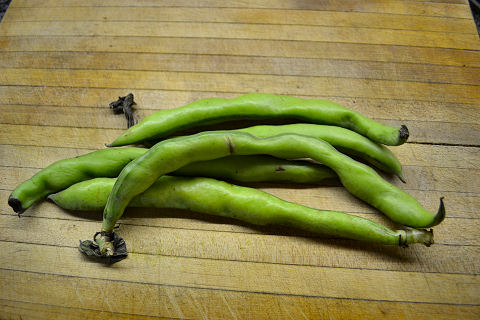
Fresh fava beans in their pods. The pods themselves are not really edible, or certainly not pleasant to eat.
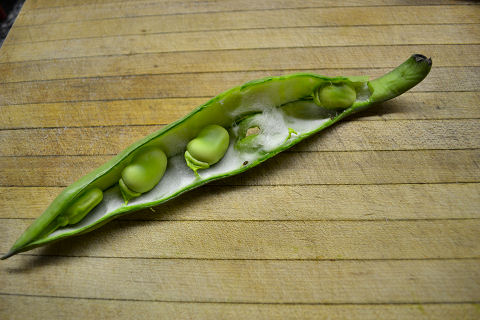
They’re easy to split along their seam, inside the beans are nestled in a sort of fiberous, cottony tissue, but they’re not firmly attached and running your thumb or finger along the inside will pop them all out.
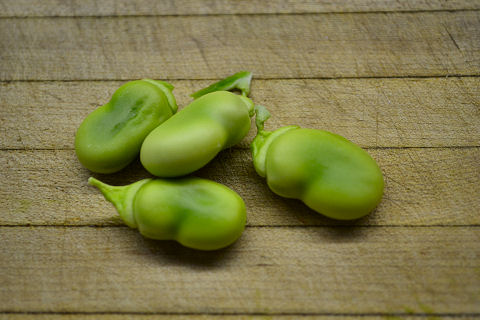
Closeup of the beans with their skin and stem on. The skin is edible, though can be chewy, if you’re going to leave them in the skins you should twist off the stems.
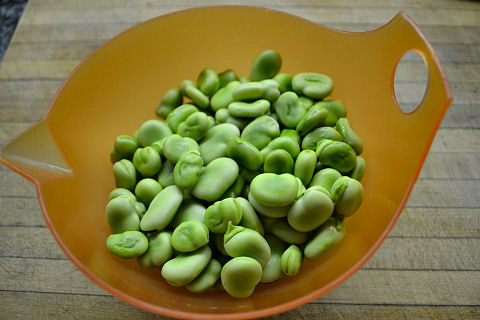
This is a little over half a kilo (maybe a pound and a half) of beans in their pods after removal – leaving around a quarter kilo, or just over half a pound of beans. (And, by the way, if you’re using frozen fava beans, this is the point at which you start….)
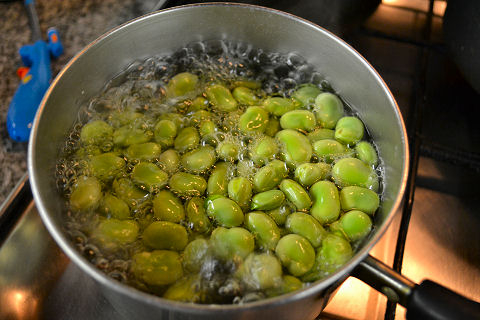
While you’re peeling the beans, or when you’re ready, bring a pot of salted water to a full boil. Add the beans and let it come back to a boil. If you’re going to use them straight after this, let them boil for about 10 minutes, which will also soften the skin enough so it’s not so chewy if you’re going to leave them in their skins. If you’re going to cook them again, such as sauteing them, 5 minutes is plenty of time to loosen the skins and set the color.
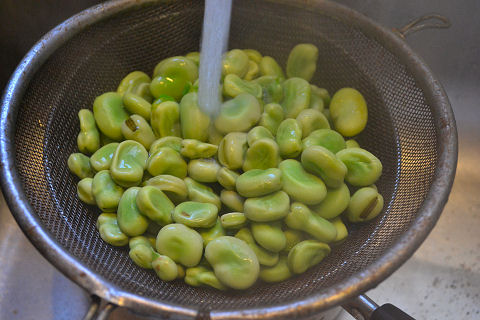
Plunge them into ice water, or, more easily, run them under very cold water (I set the strainer over the same pot they were cooked in, letting it fill with very cold water and soaking them as the water continues to run) until they are completely cold.
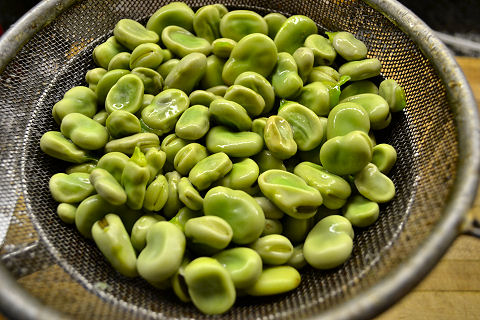
Drain them. As I said, they can be eaten as is, or…
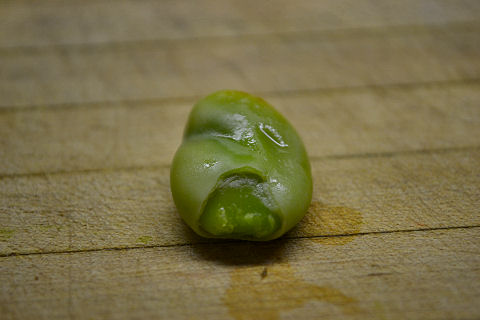
…I generally prefer to peel them, as the skin, edible or not, and containing a good amount of fiber or not, is slightly unpleasant and chewy to eat in my view unless cooked to the point where the interior bean is mush and the skin is really soft. The easiest way to peel them is to nick one end with your thumbnail or fingernail.
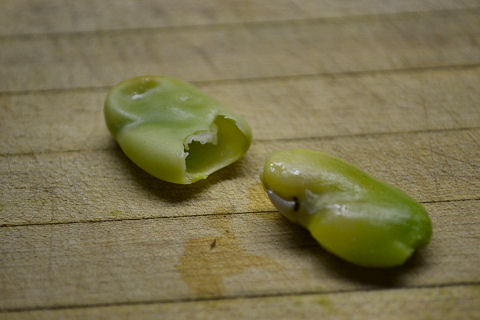
Then it’s easy to squeeze lightly from the other end and the bean will pop right out of its skin.
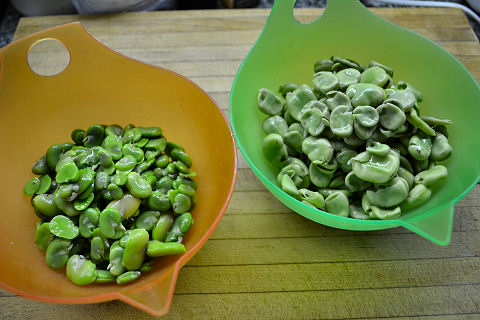
You’ll end up with a smaller quantity, obviously, and the skins can either be thrown out or composted.
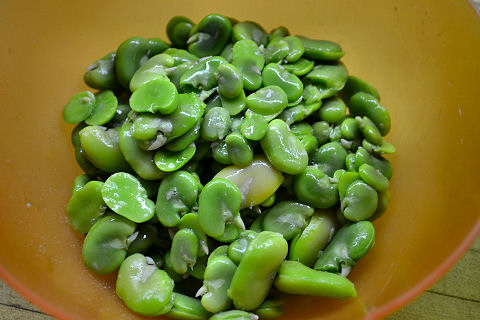
But they’re truly beautiful, and a great addition to soups, pastas, or sauteed in a little butter and salt, perhaps with a touch of garlic. Here, they’re ready to go for whatever you want to use them for.
[…] Beans (Green Fava Beans) (here called Habas) – Basically looking like giant lima beans, these take a bit more work to prepare. Neither the pod, nor the peel of the beans is really edible – they’re not poisonous or […]
[…] in the par-cooked beans. Notes on that here. They’re already cooked, so you’re really just warming them up and can move immediately […]